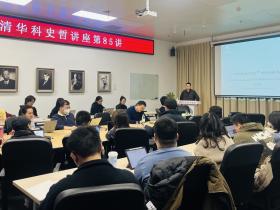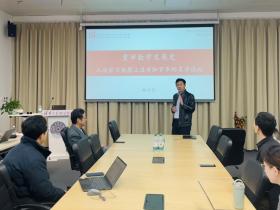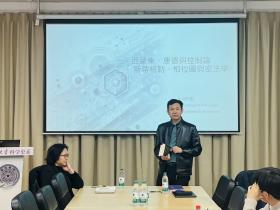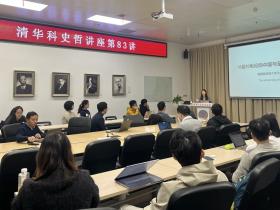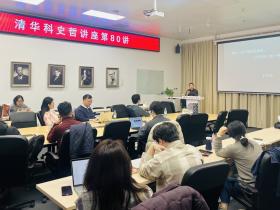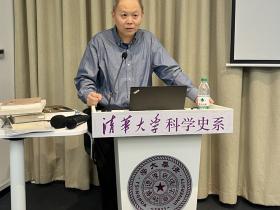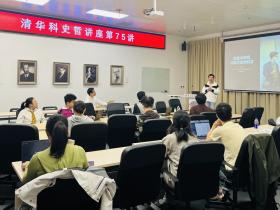On the afternoon of September 20, 2024, the Department of History of Science at Tsinghua University hosted the 70th session of the THU History and Philosophy of Science Lecture Series in Room B206 of the Mengminwei Humanities Building. The invited speaker was John Alekna (雷震), Assistant Professor in the Department of History of Science, Technology, and Medicine at Peking University. Drawing from his new book Seeking News, Making China: Information, Technology, and the Emergence of Mass Society, he delivered a lecture titled "Seeking News, Making China: Reimagining Chinese History Through Information Technology." The event was co-chaired by Associate Professor Shen Yubin and Assistant Professor Liu Xiao from Tsinghua's Department of History of Science.
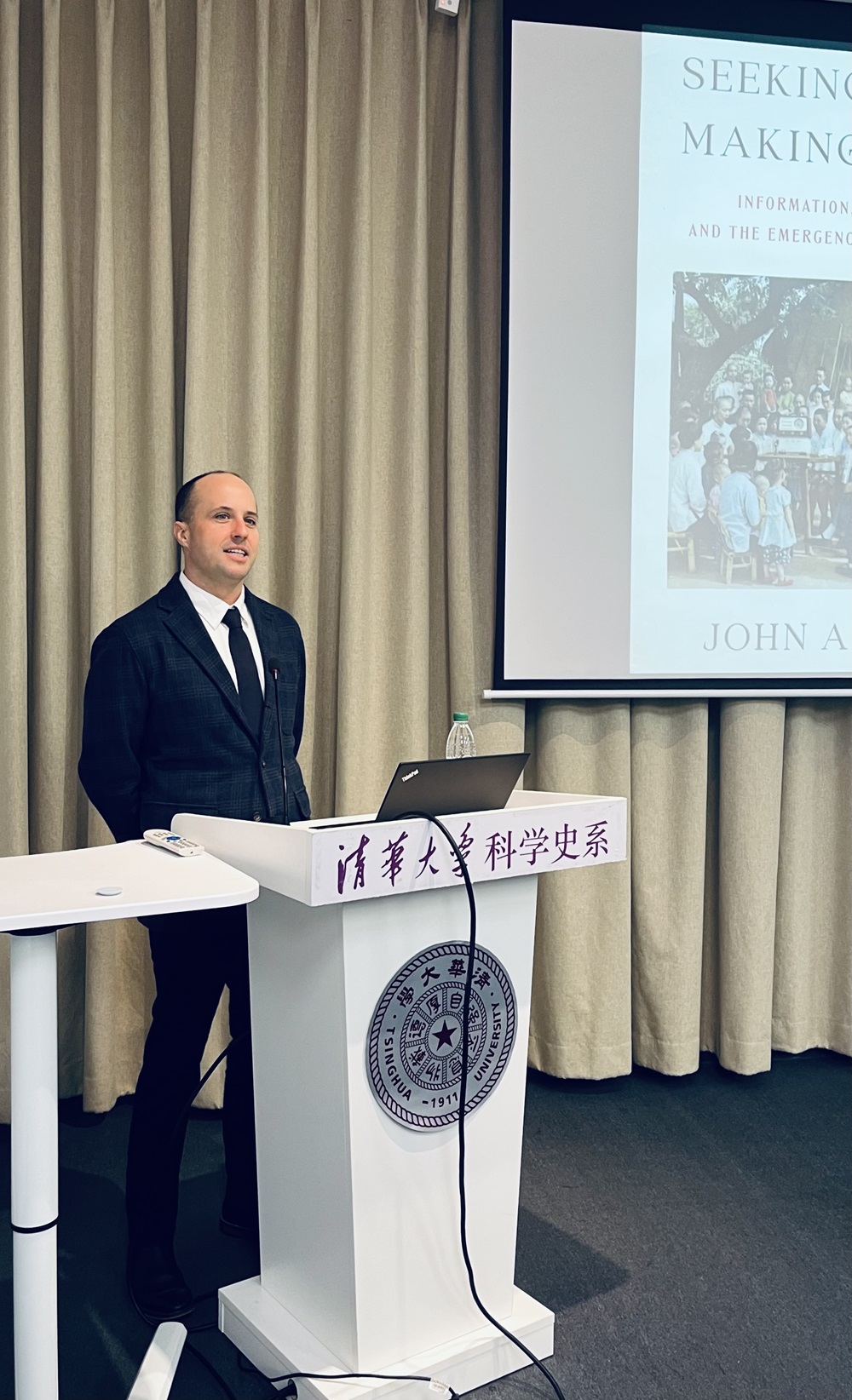
Professor Alekna opened with a provocative question: "In the early 20th century, China lacked significant mass politics, yet by the late 1950s, its leaders could mobilize hundreds of millions simultaneously." He argued that mass societies emerge through the interplay of technology and politics mediated by complex news experiences, necessitating close study of information dissemination processes. While scholars like Harold Innis, Marshall McLuhan, and Benedict Anderson explored interactions between communication technologies and state-society relations, Professor Alekna noted their frameworks inadequately address China’s unique context. Factors such as Chinese phonetics and script, agrarian social structures, sparse rail networks, and high illiteracy rates shaped a distinct path for mass society development.
To analyze this phenomenon, Professor Alekna introduced the concept of "newsscape" (新闻景观) to historicize the techno-political process of mass society formation. After defining "news" and "mass," he illustrated traditional newsscapes through the 1919 May Fourth Movement, where information spread via banners, telegrams, and newspapers was constrained in scale, speed, and structure. A case study of lecture teams in Linhai, Zhejiang, demonstrated how built environments, social settings, natural landscapes, and infrastructure collectively constituted local newsscapes.
Professor Alekna then traced transformations in China’s newsscape beginning with the powerful official radio stations established by Zhang Zuolin and Zhang Xueliang in Northeast China. He identified a pivotal shift in the 1930s with the phenomenon of "reading the radio, listening in the streets" (读广播,听街坊), where limited radio access led to news being transcribed or orally disseminated, enabling broader audiences to experience contemporaneity (同时性).
During the War of Resistance against Japan (1937–1945), news became a vital commodity alongside food, shelter, and safety. Contrasting radio availability in the home front (大后方) and occupied zones (敌占区), Professor Alekna showed how news served both as a tool for resistance and a vehicle for Japanese political indoctrination. He also highlighted the growing role of female broadcasters in wartime China—unlike Western counterparts, they represented state authority through their voices and received technical training as radio engineers.
By 1949, Professor Alekna concluded, daily radio listening had become integral to Chinese civic life. Centralized radio networks extended to townships, synchronizing national participation in political campaigns and unifying mass mobilization.

In the Q&A session, faculty and students engaged Professor Alekna on topics including the conceptualization of mass society, technology’s nonlinear developmental impact, and wartime commercial radio. Assistant Professor Liu Xiao supplemented the discussion with historical cases of Chinese fishermen using radio for weather forecasts in the 1930s–1940s, providing further context before concluding the lecture.
Documented by: Du Mingyu
Reviewed by: Shen Yubin


